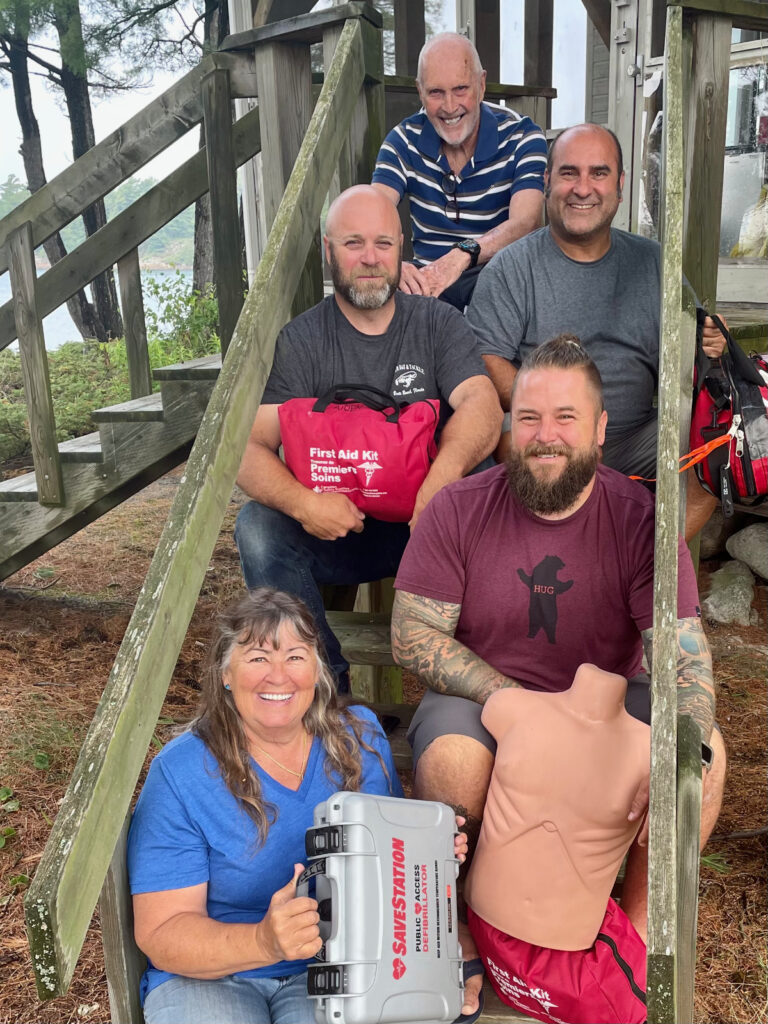
If you have a medical emergency, call 911 and go the Emergency page. For a fire emergency, DON’T call 911 — go to the Emergency page and call your local first responders, starting with the team leader. Enlist any of your neighbours to help with buckets and fire pumps.
In 2007, the young adult son of a cottage owner was using the family island with some friends. One of them had an evening fall, injuring his head badly. The son called 911 but didn’t know the island number and didn’t feel safe navigating the family boat at night.
The paramedics who responded to the call reached Bayfield Inlet, but couldn’t find anyone to transport them to the island, whose location wasn’t even known. They returned to Parry Sound without the injured young man.
The next morning, Bayfield regular Don Ord was driving by the island and was waved in for help. He assessed the situation, called the paramedics again, and got the injured young man to the mainland.
The patient was airlifted to Sudbury, a six-hour delay after his accident. It was a close call, but he survived.
As a result, then BNIA board member Ally O’Grady suggested we form an organized emergency program, and the First Response Team was born. The idea is a lot like fire response in our archipelago. We are our own custodians, at least for initial response, because we can’t rely on traditional emergency services to reach us promptly, if at all.
The BNIA’s volunteer-led and run first response program is now the envy of Georgian Bay cottagers everywhere, dealing with dozens of emergencies every summer with an enviable record of rapid response and transport to EMS personnel on the mainland.
Here’s how the First Response Team works now for medical emergencies. All the services are provided by local, qualified volunteers using BNIA-supplied equipment:
Once on site, the first responders stabilize the victim and take them to the mainland to meet the ambulance. In all cases so far, this has been accomplished in less than an hour.
Here’s the most important thing all islanders can do to prepare for a medical emergency:
Keep your cottage or island identification number and your emergency phone chart in a prominent place where any cottage user can find and use it in an instant! Program key numbers into your cell phone contact list. And call 911 — that’s the only number needed to get help within minutes.
For a fire emergency, see this page.